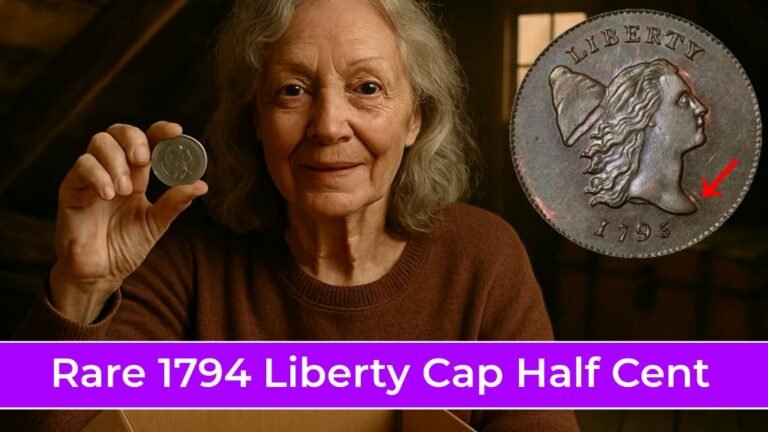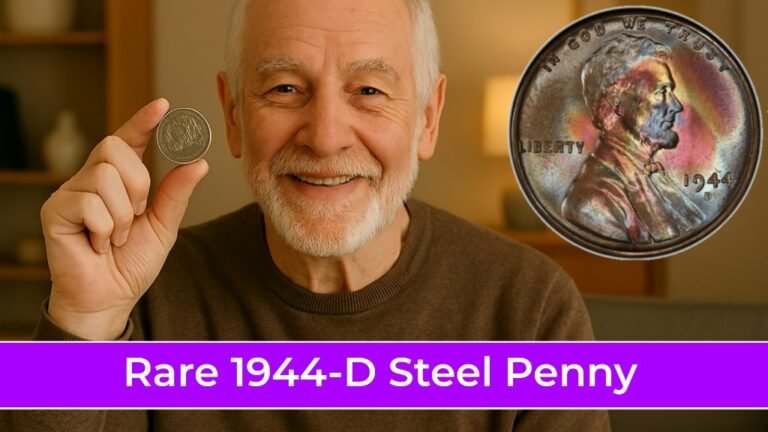The Capped Bust dime is one of the most interesting coin series for both collectors and historians in the realm of American numismatics. These dimes were made between 1809 and 1837, which was a very important time in U.S. currency. They connect the early Republic with the growing nation of the 19th century.
Most Capped Bust dimes aren’t worth much, but a couple are quite uncommon, important to history, and worth a lot of money to collectors. This detailed study looks at nine of the rarest and most precious Capped Bust dimes that may sell for a lot of money at auctions and private sales.
The Capped Bust Dime’s Legacy
The Capped Bust dime came out at a time when the country’s identity was changing. It replaced the Draped Bust design. The Chief Engraver at the U.S. Mint, John Reich, designed the coin. It shows Liberty looking left, wearing a Phrygian cap, which stands for independence, and a ribbon with the word “LIBERTY” on it. The back has the inscription “UNITED STATES OF AMERICA” and the denomination “10C” around an eagle with a shield, arrows, and an olive branch.
Even though they are small, these dimes have a lot of history. They were made at a time when technology was changing, and hand-striking methods were slowly being replaced by steam-powered presses. since of this, some Capped Bust dimes are quite rare and very valuable since they have different strike qualities, die types, and minting mistakes.
Now, let’s look at the nine most valuable Capped Bust dimes that are still getting a lot of attention in the world of coin collect
Also read – 9 Rare Nickels That Could Make You Rich Overnight
1. 1809 10C Large Date
The Capped Bust series officially started in 1809, but the first dies were just tests, thus there are a lot of different types. One of the rarest is the 1809 Large Date, Small Eagle. There are only a few known examples of this, therefore it is a crown jewel for serious collectors.
The date typeface is bigger and the eagle on the back is smaller and more stylized. There are almost no high-grade examples because they were made in little amounts and didn’t last long. A PCGS-graded VF-30 example sold for more than $120,000 at auction in 2018. Experts think that a mint-condition copy, if one were ever found, could be worth more than $500,000.
2. Dime with a Capped Bust from 1822 (No Drapery)
The 1822 dime is interesting because it has a design flaw: there is no curtain behind Liberty’s elbow. There are only about 10 authenticated examples of this uncommon and important die type, which is known as the “No Drapery” variety.
The regular 1822 dime with drapery is already hard to find, but the “No Drapery” variation is a rare coin. An AU-55 sample that was verified by PCGS sold for $85,000 at a big auction in 2021. Its rarity comes from the fact that it was made with only one die, which was quickly fixed, making it a true one-year wonder.
3. 1820/19 Overdate (O-111)
Overdates happen when a die is punched with a new year over an old one. This was a frequent way to save time and money in the early 1800s. The 1820/19 is one of the most well-known overdates in the Capped Bust series.
This coin is a favorite among collectors of different types because you can see the “9” underneath the “0” in the date. There are very few high-grade copies, and only a few are reported to be in immaculate condition. In 2019, a PCGS MS-64 sample sold for $98,000. The coin’s historical importance and good looks make it worth a lot more.
4. 1837 No Stars
In 1837, the last year of the Capped Bust dime series, the design changed a lot. Most 1837 dimes had stars on the front, but a few were made without stars and with a reeded edge. These are transitional pieces between the Capped Bust and the new Seated Liberty design.
These “No Stars” dimes were probably either test strikes or the first coins made. People think that there are fewer than 20 of them. An NGC-graded AU-58 coin sold for $110,000 in 2020. Not only is this coin rare, but it also marks the end of an era, which is why numismatists value it so much.
5. 1817 10C
There were many different types of dies for early U.S. coins because there was no standard way to arrange the stars. One of the rarest designs is the 1817 dime with 9 stars on the left and 2 on the right.
The 9-2 divide is a big deal because most 1817 dimes have 8 stars on the left and 3 on the right. There are only a few high-quality copies, and none of them are known to be in full pristine condition. A PCGS VF-35 coin sold for $72,000 at auction in 2022. This is a must-have for anybody who collect die varieties and old American coins.
Also read – 7 Rare Dimes Hiding in Your Change That Are Worth a Fortune
6. 1834 Capped Bust Dime
The U.S. Mint didn’t formally make proof coins until the 1850s, although some early dimes seem like proof coins because they were struck carefully and the dies were polished. One example is the 1834 Capped Bust dime, which has deep mirrored fields and cameo contrast.
There aren’t many of these proof-like coins known. In 2023, one NGC-certified PF-64 Cameo sold for $95,000. Its almost mirror-like surfaces and fine details suggest that it was probably made for display or diplomatic purposes, which makes it a sought-after item for high-end collectors.
7. 1829 10C Large Date, Close 9 (O-103)
The 1829 Large Date, Close 9 variation is different because the “9” in the date is close to Liberty’s bust. This die variant is far less common than the “Wide 9” form.
This dime is a crucial date in the series because there are just 15 known examples and only one that is graded above MS-60. An MS-62 sample from PCGS sold for $88,000 in 2017. Because it has a tiny mintage, great demand, and is hard to find in top grades, it is one of the most valuable Capped Bust dimes.
8. 1813/2 Overdate (O-102)
The 1813/2 is another well-known overdate. It has a clear “2” under the “3” in the date. This mistake happened when a die that was initially made for 1812 was used for 1813.
The overdate is hard to see, but you can see it with a magnifying glass. There are just approximately 12 known specimens, and most of them are in bad shape. In 2020, though, a PCGS VF-30 sample sold for $76,000, which shows how much people value past die faults. Collectors of early overdates love this coin because it is both interesting from a technical and historical point of view.
9. 1833 Capped Bust Dime
The 1833 dime is one of the last ones made in the series, and it has several very rare strikes that make it stand out. These coins include precise detailing, mirrored surfaces, and signs of skilled hand-striking, which means they weren’t designed to be used as money.
There are just three or four known strikes of this type. In 2021, one NGC-certified SP-63 specimen sold for $105,000. Numismatists think these were perhaps gifts for important people from other countries or Mint officials. They are some of the most sought-after Capped Bust dimes because they are so mysterious and beautiful.
What Makes These Dimes So Valuable?
These rare Capped Bust dimes are worth a lot for a number of reasons:
- Low Mintage and Survival Rates: A lot of early U.S. coins were made in little amounts and were used a lot, therefore not many of them survived.
- Historical Importance: These coins show a time in American history that was important, from the economy after the War of 1812 to the start of industrialization.
- Die Varieties and Errors: The way coins were made at the time led to many different types of dies, some of which were only used for a brief time or were just tests.
- Condition and Rarity: Coins in high grades (MS-60 and higher) are very hard to find, especially those from the early 1800s.
- Collector Demand: The Capped Bust series is popular with serious collectors, which makes prices go up for important dates and types.
How to Find and Verify Rare Capped Bust Dimes
It takes skill to tell if a rare Capped Bust dime is real. Important steps are:
- Professional Grading: Send coins to well-known services like PCGS or NGC to have them checked and graded.
- Die Variety Analysis: Use reference books like “The Cherrypickers’ Guide” or “The Cohen Catalog” to find overdates and star arrangements.
- Expert Consultation: Get help from coin experts or auction houses that deal with early U.S. coins.
- Provenance Research: Find out who has owned the coins before, since coins with interesting histories frequently sell for more.
Final Thoughts
At first sight, the Capped Bust dime series may not look like much, but its simple design hides a lot of rare coins. These nine dimes, which include overdates, die variants, transitional strikes, and specimen strikes, are the best examples of early American coin collection.
Finding one of these rare dimes might be a once-in-a-lifetime occurrence for collectors. These coins are more than just money; they are artifacts of a fledgling country’s path into economic and creative maturity. They may have come from an ancient family collection, been bought at auction, or been passed down without anybody knowing.
The value of these Capped Bust dimes will probably go up as more people want rare early American coins. They are still among of the most sought-after and valuable small-denomination coins in U.S. history. Each one is a miniature work of art worth a lot of money.




